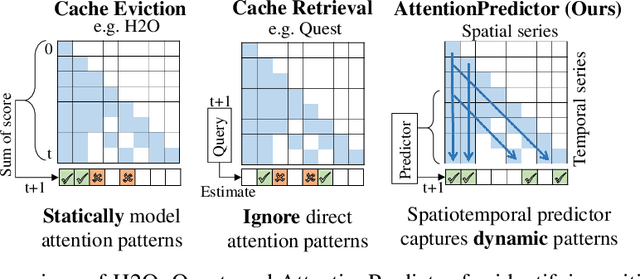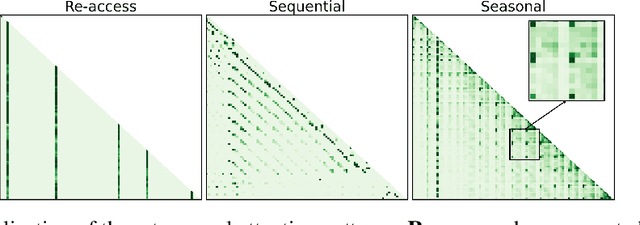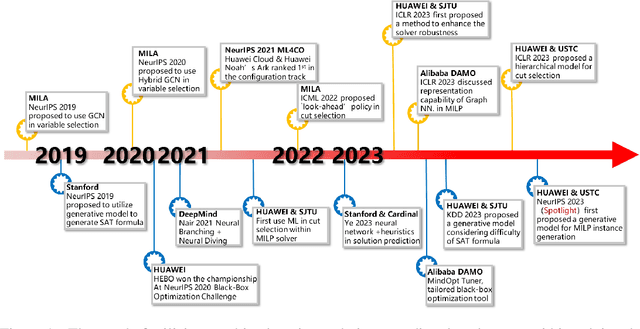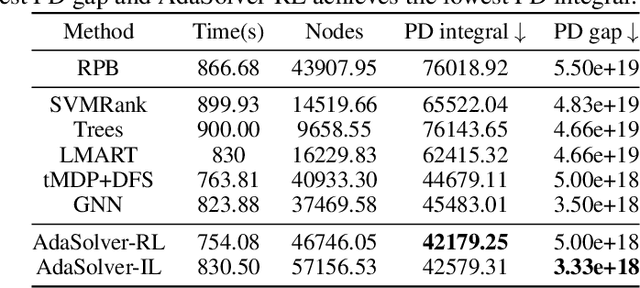Zhihai Wang
HyperTree Planning: Enhancing LLM Reasoning via Hierarchical Thinking
May 05, 2025Abstract:Recent advancements have significantly enhanced the performance of large language models (LLMs) in tackling complex reasoning tasks, achieving notable success in domains like mathematical and logical reasoning. However, these methods encounter challenges with complex planning tasks, primarily due to extended reasoning steps, diverse constraints, and the challenge of handling multiple distinct sub-tasks. To address these challenges, we propose HyperTree Planning (HTP), a novel reasoning paradigm that constructs hypertree-structured planning outlines for effective planning. The hypertree structure enables LLMs to engage in hierarchical thinking by flexibly employing the divide-and-conquer strategy, effectively breaking down intricate reasoning steps, accommodating diverse constraints, and managing multiple distinct sub-tasks in a well-organized manner. We further introduce an autonomous planning framework that completes the planning process by iteratively refining and expanding the hypertree-structured planning outlines. Experiments demonstrate the effectiveness of HTP, achieving state-of-the-art accuracy on the TravelPlanner benchmark with Gemini-1.5-Pro, resulting in a 3.6 times performance improvement over o1-preview.
Accelerating Large Language Model Reasoning via Speculative Search
May 03, 2025Abstract:Tree-search-based reasoning methods have significantly enhanced the reasoning capability of large language models (LLMs) by facilitating the exploration of multiple intermediate reasoning steps, i.e., thoughts. However, these methods suffer from substantial inference latency, as they have to generate numerous reasoning thoughts, severely limiting LLM applicability. To address this challenge, we propose a novel Speculative Search (SpecSearch) framework that significantly accelerates LLM reasoning by optimizing thought generation. Specifically, SpecSearch utilizes a small model to strategically collaborate with a large model at both thought and token levels, efficiently generating high-quality reasoning thoughts. The major pillar of SpecSearch is a novel quality-preserving rejection mechanism, which effectively filters out thoughts whose quality falls below that of the large model's outputs. Moreover, we show that SpecSearch preserves comparable reasoning quality to the large model. Experiments on both the Qwen and Llama models demonstrate that SpecSearch significantly outperforms state-of-the-art approaches, achieving up to 2.12$\times$ speedup with comparable reasoning quality.
AttentionPredictor: Temporal Pattern Matters for Efficient LLM Inference
Feb 06, 2025



Abstract:With the development of large language models (LLMs), efficient inference through Key-Value (KV) cache compression has attracted considerable attention, especially for long-context generation. To compress the KV cache, recent methods identify critical KV tokens through heuristic ranking with attention scores. However, these methods often struggle to accurately determine critical tokens as they neglect the \textit{temporal patterns} in attention scores, resulting in a noticeable degradation in LLM performance. To address this challenge, we propose AttentionPredictor, which is the first learning-based critical token identification approach. Specifically, AttentionPredictor learns a lightweight convolution model to capture spatiotemporal patterns and predict the next-token attention score. An appealing feature of AttentionPredictor is that it accurately predicts the attention score while consuming negligible memory. Moreover, we propose a cross-token critical cache prefetching framework that hides the token estimation time overhead to accelerate the decoding stage. By retaining most of the attention information, AttentionPredictor achieves 16$\times$ KV cache compression with comparable LLM performance, significantly outperforming the state-of-the-art.
Learning to Cut via Hierarchical Sequence/Set Model for Efficient Mixed-Integer Programming
Apr 19, 2024



Abstract:Cutting planes (cuts) play an important role in solving mixed-integer linear programs (MILPs), which formulate many important real-world applications. Cut selection heavily depends on (P1) which cuts to prefer and (P2) how many cuts to select. Although modern MILP solvers tackle (P1)-(P2) by human-designed heuristics, machine learning carries the potential to learn more effective heuristics. However, many existing learning-based methods learn which cuts to prefer, neglecting the importance of learning how many cuts to select. Moreover, we observe that (P3) what order of selected cuts to prefer significantly impacts the efficiency of MILP solvers as well. To address these challenges, we propose a novel hierarchical sequence/set model (HEM) to learn cut selection policies. Specifically, HEM is a bi-level model: (1) a higher-level module that learns how many cuts to select, (2) and a lower-level module -- that formulates the cut selection as a sequence/set to sequence learning problem -- to learn policies selecting an ordered subset with the cardinality determined by the higher-level module. To the best of our knowledge, HEM is the first data-driven methodology that well tackles (P1)-(P3) simultaneously. Experiments demonstrate that HEM significantly improves the efficiency of solving MILPs on eleven challenging MILP benchmarks, including two Huawei's real problems.
Learning to Stop Cut Generation for Efficient Mixed-Integer Linear Programming
Feb 02, 2024



Abstract:Cutting planes (cuts) play an important role in solving mixed-integer linear programs (MILPs), as they significantly tighten the dual bounds and improve the solving performance. A key problem for cuts is when to stop cuts generation, which is important for the efficiency of solving MILPs. However, many modern MILP solvers employ hard-coded heuristics to tackle this problem, which tends to neglect underlying patterns among MILPs from certain applications. To address this challenge, we formulate the cuts generation stopping problem as a reinforcement learning problem and propose a novel hybrid graph representation model (HYGRO) to learn effective stopping strategies. An appealing feature of HYGRO is that it can effectively capture both the dynamic and static features of MILPs, enabling dynamic decision-making for the stopping strategies. To the best of our knowledge, HYGRO is the first data-driven method to tackle the cuts generation stopping problem. By integrating our approach with modern solvers, experiments demonstrate that HYGRO significantly improves the efficiency of solving MILPs compared to competitive baselines, achieving up to 31% improvement.
Machine Learning Insides OptVerse AI Solver: Design Principles and Applications
Jan 17, 2024



Abstract:In an era of digital ubiquity, efficient resource management and decision-making are paramount across numerous industries. To this end, we present a comprehensive study on the integration of machine learning (ML) techniques into Huawei Cloud's OptVerse AI Solver, which aims to mitigate the scarcity of real-world mathematical programming instances, and to surpass the capabilities of traditional optimization techniques. We showcase our methods for generating complex SAT and MILP instances utilizing generative models that mirror multifaceted structures of real-world problem. Furthermore, we introduce a training framework leveraging augmentation policies to maintain solvers' utility in dynamic environments. Besides the data generation and augmentation, our proposed approaches also include novel ML-driven policies for personalized solver strategies, with an emphasis on applications like graph convolutional networks for initial basis selection and reinforcement learning for advanced presolving and cut selection. Additionally, we detail the incorporation of state-of-the-art parameter tuning algorithms which markedly elevate solver performance. Compared with traditional solvers such as Cplex and SCIP, our ML-augmented OptVerse AI Solver demonstrates superior speed and precision across both established benchmarks and real-world scenarios, reinforcing the practical imperative and effectiveness of machine learning techniques in mathematical programming solvers.
Accelerate Presolve in Large-Scale Linear Programming via Reinforcement Learning
Oct 18, 2023



Abstract:Large-scale LP problems from industry usually contain much redundancy that severely hurts the efficiency and reliability of solving LPs, making presolve (i.e., the problem simplification module) one of the most critical components in modern LP solvers. However, how to design high-quality presolve routines -- that is, the program determining (P1) which presolvers to select, (P2) in what order to execute, and (P3) when to stop -- remains a highly challenging task due to the extensive requirements on expert knowledge and the large search space. Due to the sequential decision property of the task and the lack of expert demonstrations, we propose a simple and efficient reinforcement learning (RL) framework -- namely, reinforcement learning for presolve (RL4Presolve) -- to tackle (P1)-(P3) simultaneously. Specifically, we formulate the routine design task as a Markov decision process and propose an RL framework with adaptive action sequences to generate high-quality presolve routines efficiently. Note that adaptive action sequences help learn complex behaviors efficiently and adapt to various benchmarks. Experiments on two solvers (open-source and commercial) and eight benchmarks (real-world and synthetic) demonstrate that RL4Presolve significantly and consistently improves the efficiency of solving large-scale LPs, especially on benchmarks from industry. Furthermore, we optimize the hard-coded presolve routines in LP solvers by extracting rules from learned policies for simple and efficient deployment to Huawei's supply chain. The results show encouraging economic and academic potential for incorporating machine learning to modern solvers.
A Circuit Domain Generalization Framework for Efficient Logic Synthesis in Chip Design
Aug 22, 2023



Abstract:Logic Synthesis (LS) plays a vital role in chip design -- a cornerstone of the semiconductor industry. A key task in LS is to transform circuits -- modeled by directed acyclic graphs (DAGs) -- into simplified circuits with equivalent functionalities. To tackle this task, many LS operators apply transformations to subgraphs -- rooted at each node on an input DAG -- sequentially. However, we found that a large number of transformations are ineffective, which makes applying these operators highly time-consuming. In particular, we notice that the runtime of the Resub and Mfs2 operators often dominates the overall runtime of LS optimization processes. To address this challenge, we propose a novel data-driven LS operator paradigm, namely PruneX, to reduce ineffective transformations. The major challenge of developing PruneX is to learn models that well generalize to unseen circuits, i.e., the out-of-distribution (OOD) generalization problem. Thus, the major technical contribution of PruneX is the novel circuit domain generalization framework, which learns domain-invariant representations based on the transformation-invariant domain-knowledge. To the best of our knowledge, PruneX is the first approach to tackle the OOD problem in LS operators. We integrate PruneX with the aforementioned Resub and Mfs2 operators. Experiments demonstrate that PruneX significantly improves their efficiency while keeping comparable optimization performance on industrial and very large-scale circuits, achieving up to $3.1\times$ faster runtime.
Learning Cut Selection for Mixed-Integer Linear Programming via Hierarchical Sequence Model
Feb 01, 2023



Abstract:Cutting planes (cuts) are important for solving mixed-integer linear programs (MILPs), which formulate a wide range of important real-world applications. Cut selection -- which aims to select a proper subset of the candidate cuts to improve the efficiency of solving MILPs -- heavily depends on (P1) which cuts should be preferred, and (P2) how many cuts should be selected. Although many modern MILP solvers tackle (P1)-(P2) by manually designed heuristics, machine learning offers a promising approach to learn more effective heuristics from MILPs collected from specific applications. However, many existing learning-based methods focus on learning which cuts should be preferred, neglecting the importance of learning the number of cuts that should be selected. Moreover, we observe from extensive empirical results that (P3) what order of selected cuts should be preferred has a significant impact on the efficiency of solving MILPs as well. To address this challenge, we propose a novel hierarchical sequence model (HEM) to learn cut selection policies via reinforcement learning. Specifically, HEM consists of a two-level model: (1) a higher-level model to learn the number of cuts that should be selected, (2) and a lower-level model -- that formulates the cut selection task as a sequence to sequence learning problem -- to learn policies selecting an ordered subset with the size determined by the higher-level model. To the best of our knowledge, HEM is the first method that can tackle (P1)-(P3) in cut selection simultaneously from a data-driven perspective. Experiments show that HEM significantly improves the efficiency of solving MILPs compared to human-designed and learning-based baselines on both synthetic and large-scale real-world MILPs, including MIPLIB 2017. Moreover, experiments demonstrate that HEM well generalizes to MILPs that are significantly larger than those seen during training.
Efficient Exploration in Resource-Restricted Reinforcement Learning
Dec 14, 2022



Abstract:In many real-world applications of reinforcement learning (RL), performing actions requires consuming certain types of resources that are non-replenishable in each episode. Typical applications include robotic control with limited energy and video games with consumable items. In tasks with non-replenishable resources, we observe that popular RL methods such as soft actor critic suffer from poor sample efficiency. The major reason is that, they tend to exhaust resources fast and thus the subsequent exploration is severely restricted due to the absence of resources. To address this challenge, we first formalize the aforementioned problem as a resource-restricted reinforcement learning, and then propose a novel resource-aware exploration bonus (RAEB) to make reasonable usage of resources. An appealing feature of RAEB is that, it can significantly reduce unnecessary resource-consuming trials while effectively encouraging the agent to explore unvisited states. Experiments demonstrate that the proposed RAEB significantly outperforms state-of-the-art exploration strategies in resource-restricted reinforcement learning environments, improving the sample efficiency by up to an order of magnitude.
 Add to Chrome
Add to Chrome Add to Firefox
Add to Firefox Add to Edge
Add to Edge